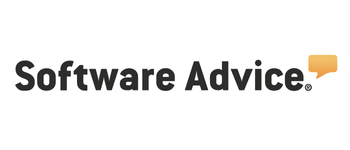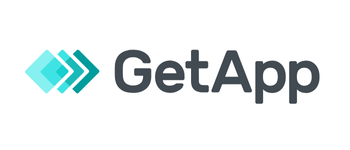
Building Management Software vs. Spreadsheets: Which is More Efficient?
Managing a building involves juggling many responsibilities – repairs, tenant communications, inspections, safety compliance, maintenance schedules, and more. While many building managers still rely on spreadsheets to track all of this, a manual-first approach only works for so long. As your building portfolio grows or responsibilities increase, the cracks begin to show. Organisation slips, mistakes become more common, and key tasks can get overlooked.
A 2023 report from Sodexo Australia highlights a major shift toward smart building tools and digital workflows. According to the report, sensor-based systems that manage lighting, ventilation, and temperature are delivering energy savings between 15% and 40%. This signals a growing preference among building operators for tools that provide better oversight, clearer reporting, and improved team collaboration. In this context, relying solely on spreadsheets can significantly hinder efficiency and responsiveness.
Spreadsheets: Simple but Risky
Spreadsheets are familiar and easy to use. You open a file, enter data, save it, and you’re done. That simplicity works when you’re managing a handful of tasks. But buildings are complex, and the margin for error is slim.
A PwC report found that 88% of spreadsheets contain errors. That’s a serious concern when you’re using them to oversee maintenance schedules, tenant requests, or safety checks. A missed formula or overlooked cell could lead to a critical task being skipped – or worse, misreported.
Collaboration can be another potential weak point, since spreadsheets don’t handle multi-user environments well. Anyone with access can overwrite data, there’s no version control, and no permissions structure to limit editing rights. The result? Confusion, miscommunication, and lost information.
What Building Management Software Does
Building management software is purpose-built to handle the day-to-day demands of facilities and property oversight. It centralises everything; scheduling, tenant communication, issue tracking, and reporting, all within a single platform.
MYBOS, for instance, is tailored to support building managers, strata teams, and real estate companies. It’s especially effective in smart buildings and environments that demand modern maintenance strategies.
Instead of juggling multiple files and systems, you work from one centralised dashboard with full status and progress oversight on every single action. This consistency saves time and improves accuracy, and it also makes it easier to monitor performance and track activity over time.
Why Software Works Better
Here’s how building management software improves day-to-day operations:
- Fewer errors: You enter data once, and the system updates everything automatically. No need to duplicate entries across spreadsheets – less manual input means fewer mistakes.
- Automation: Set recurring tasks, automate tenant updates, and schedule preventive maintenance. The software handles follow-ups and reminders, so you don’t have to.
- Transparent data: A complete historical record of all work completed on an asset and in your preventive maintenance schedule, ensuring you meet auditing and compliance guidelines.
- Team collaboration: Multiple users can access the system from different locations. Permissions control who can view or edit data, removing the risk of overwritten or lost files.
- Faster reporting: Generate reports with a few clicks, with no complex formulas or digging through old data. You get up-to-date, shareable information instantly.
- Smart system integration: If your building uses automated systems like HVAC, lighting, or security, the software can often integrate directly, offering more control and visibility.
Want to learn more? Here’s how MYBOS supports strata managers.
Maintenance and Asset Management
While spreadsheets can track assets and note when maintenance is due, their capabilities stop there. They don’t provide automated reminders, monitor performance trends, or store a comprehensive maintenance history – unless you input everything manually.
In contrast, building management software maintains a full record for each asset. You can attach documents, log repairs, and monitor performance over time. This helps with planning and budgeting, and it ensures you aren’t caught off guard by unexpected maintenance. Preventive maintenance becomes easier, too – allowing you to catch issues early and avoid larger, more costly repairs. If there’s ever a complaint or audit, you’ll have a complete history at your fingertips.
Staying Compliant
Compliance is a critical part of building management. You need to document inspections, confirm that issues were resolved, and prove that tenants were informed.
Software helps by maintaining a digital audit trail. You can instantly retrieve records during inspections or reviews – no need to search through email threads or scattered documents.
Spreadsheets can’t match that level of reliability. Even when carefully maintained, they make it hard to keep everything organised in one place.
Looking for more ideas? This article on strata technology explores other ways to modernise your operations.
What the Industry Is Saying
Industry research backs this shift. A Deloitte report found that digital systems significantly boost productivity and reduce costs in facility management. When teams move away from spreadsheets, they free up time and improve operational performance.
Similarly, a McKinsey study points out that buildings with robust automation and data systems achieve better long-term value and higher tenant satisfaction across areas like energy usage, safety tracking, and property oversight.
The conclusion is clear: using software leads to better results.
Why It Matters Now, and What You Can Do
Building operations are more complex than ever. With new regulations, rising expectations, and increasingly data-driven systems, legacy tools and outdated systems just don’t cut it anymore. Whether you’re managing real estate, facilities, or strata operations, you need systems that are faster, smarter, and more reliable.
Spreadsheets often create more administrative work and leave room for error. Building management software, on the other hand, is built to support your role. It streamlines daily tasks and boosts overall performance.
You don’t need to overhaul everything at once. Start with a single feature, like asset tracking or maintenance scheduling, and expand over time. Many managers find that once they start using building management software, they don’t want to go back.
It also improves communication. Whether you’re handling tenant issues, maintenance tasks, or compliance requirements, a central system reduces friction and saves valuable time.
Check out our guide on simplifying maintenance with asset tracking tools to get started.
The Bottom Line
Spreadsheets are useful—but they weren’t built for managing complex building operations. As your responsibilities grow, they become harder to manage and riskier to rely on.
Building management software is designed for this work. It’s accurate, team-friendly, and supports compliance, automation, and preventive maintenance. Whether you’re in real estate, strata, or facilities management, it helps you run your building more efficiently.
Ready to move beyond spreadsheets? See how MYBOS works or book a demo to discover how it can support your team.








